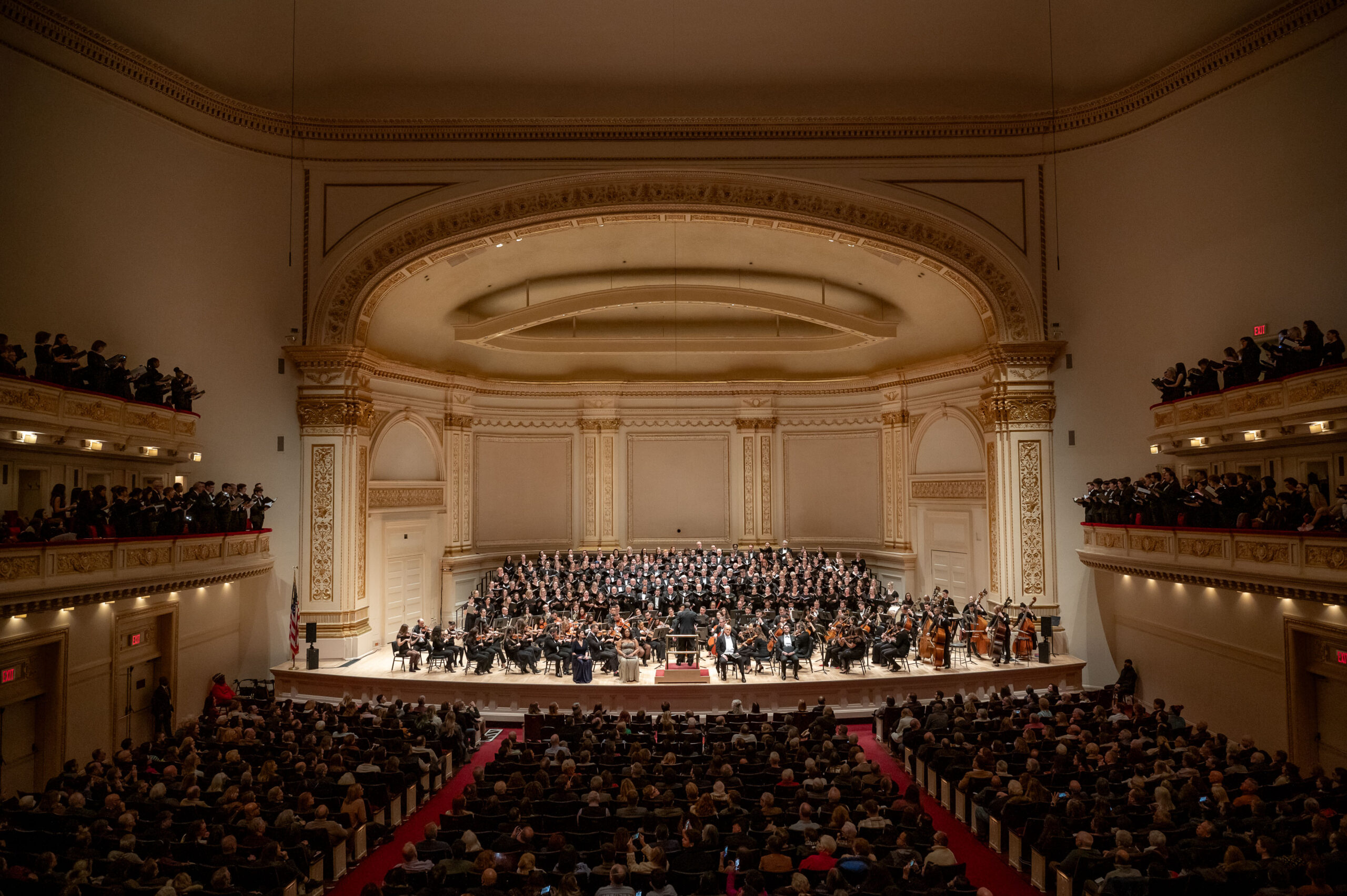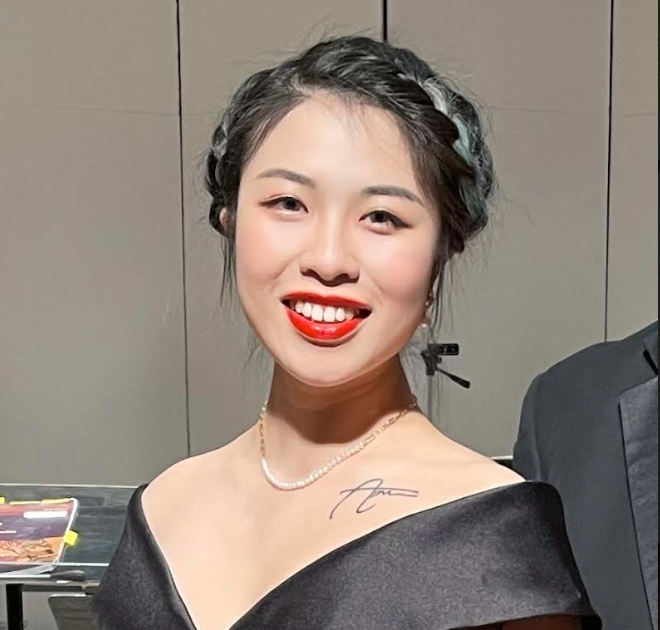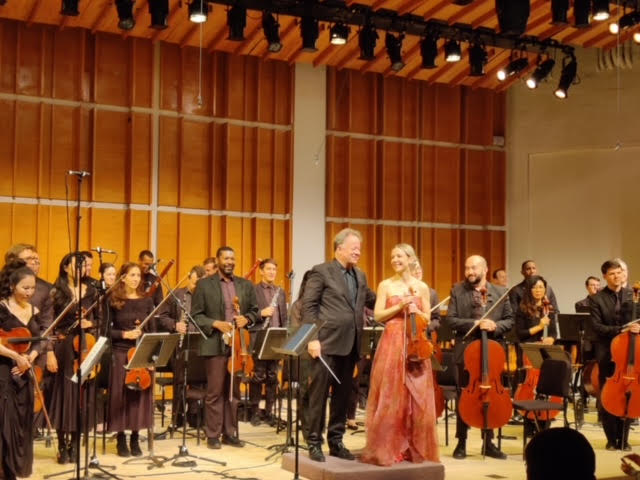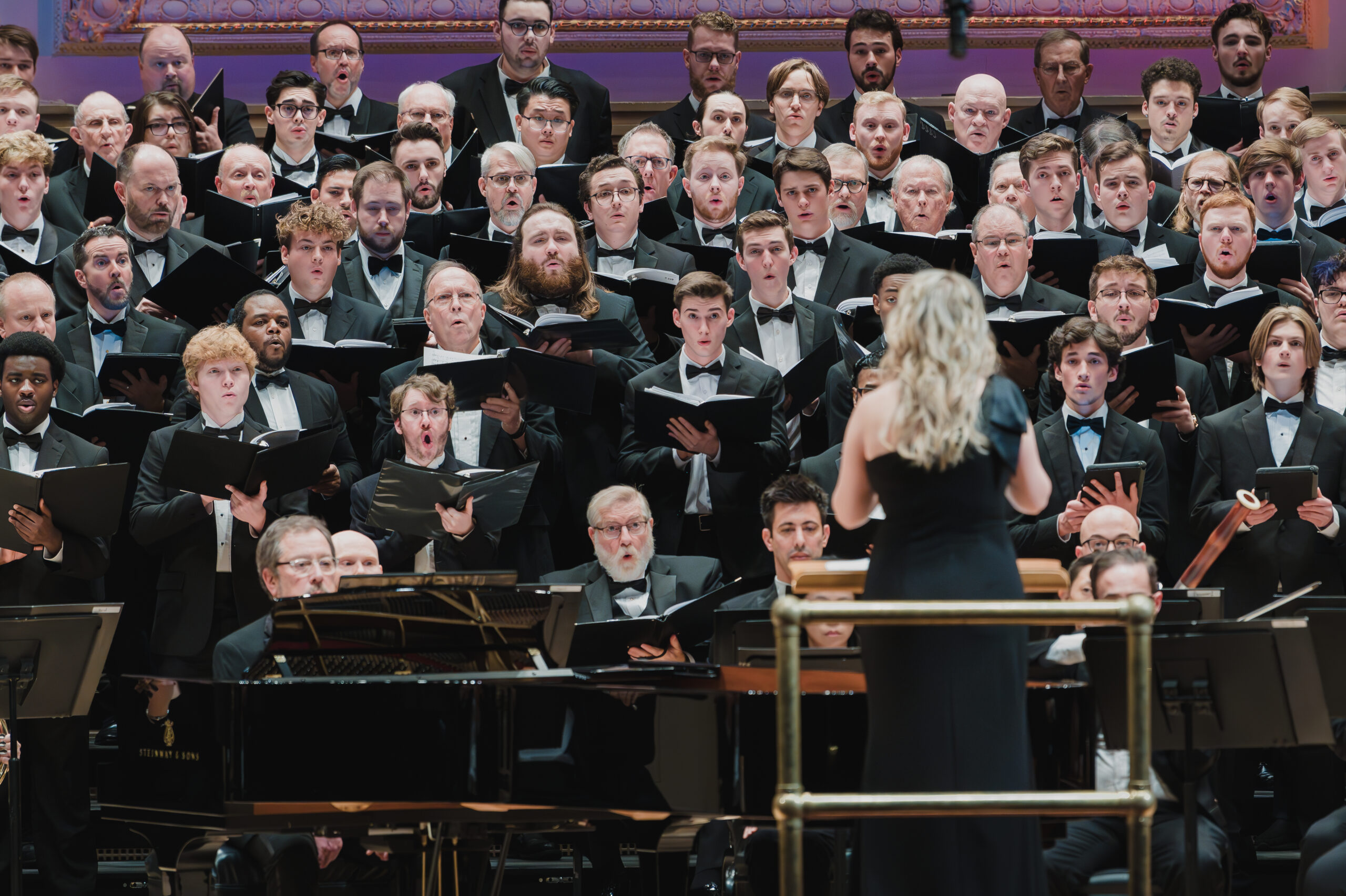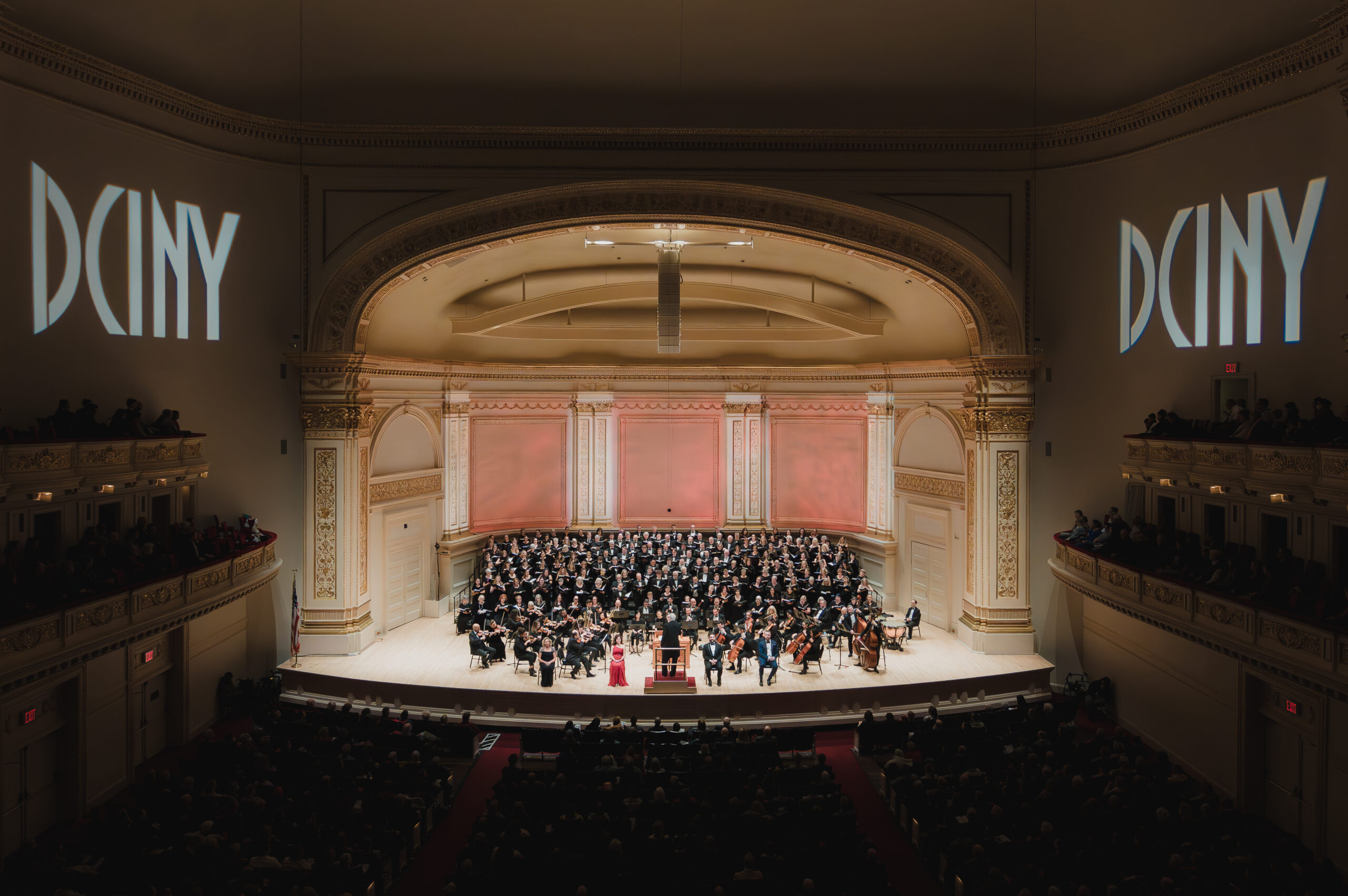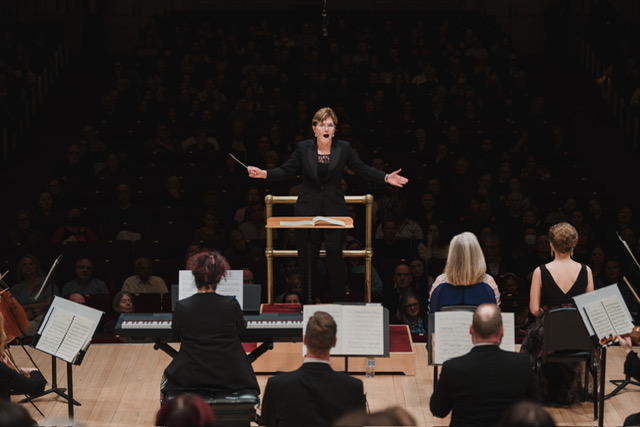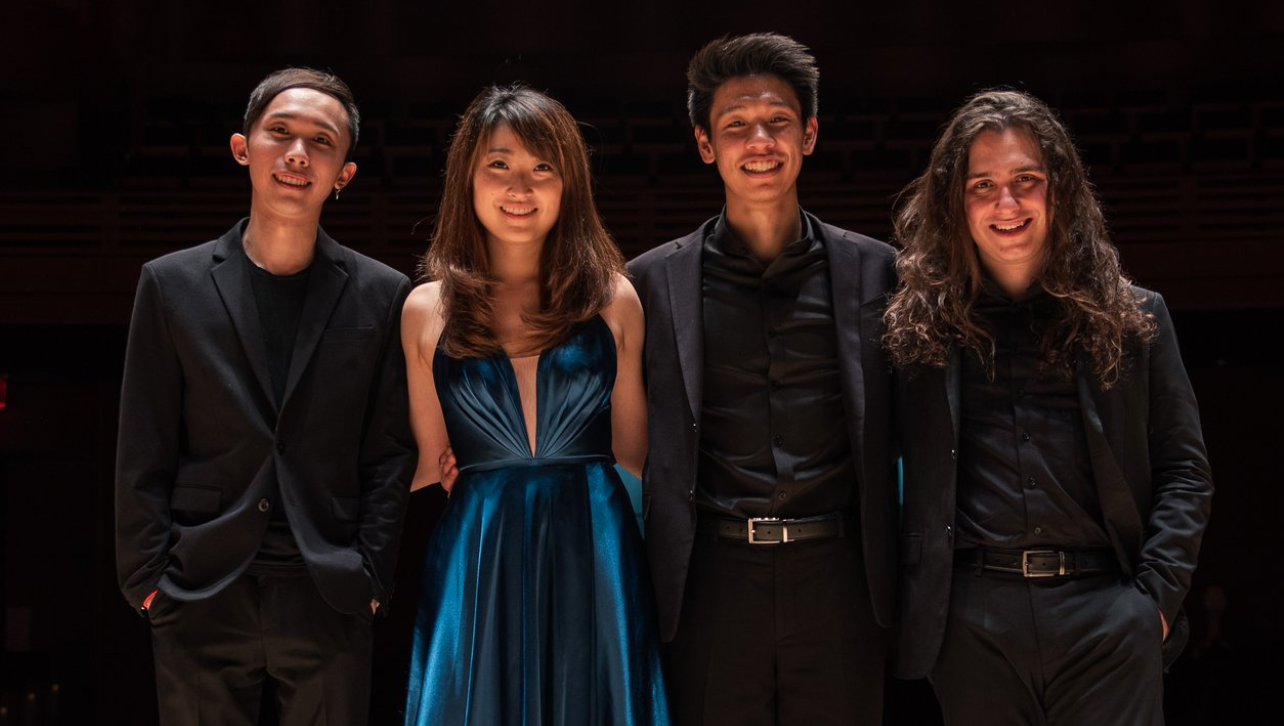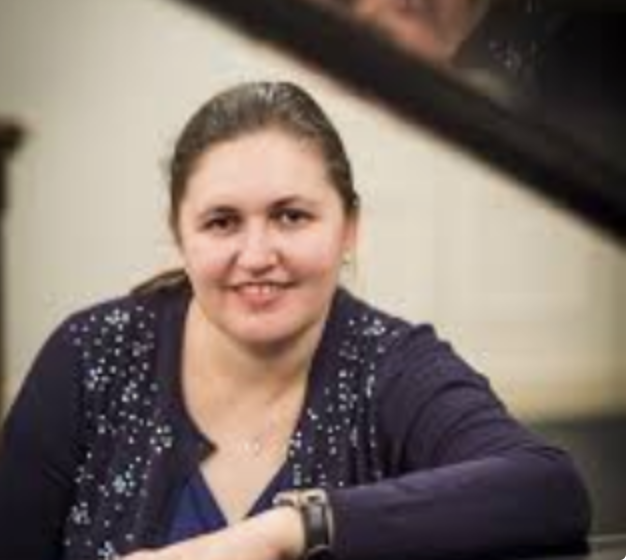Peter Tiboris, General Director and Artistic Director of MidAmerica Productions/conductor
John Rutter, CBE, conductor
New England Symphonic Ensemble
Preston Hawes, Artistic director and Concertmaster
Juliet Ariadne Papadopoulos, soprano; Courtney Johnson, soprano; Reveka Mavrovitis, mezzo-soprano; Abraham Bretón; tenor; Philip Skinner, bass
Eilana Lappalainen, reader
Stern Auditorium at Carnegie Hall, New York, NY
January 7, 2024
On January 7, 1984, Peter Tiboris created and conducted a concert at Alice Tully Hall, which became the founding date of MidAmerica Productions . January 7, 2024, forty years later to the exact date, Mr. Tiboris was to conduct Beethoven’s monumental Ninth Symphony in celebration of that anniversary. In those 40 years, MidAmerica Productions grew to boast the following numbers: This was to be the 1,480th Concert Worldwide, 1,144th in New York, and 689th in Carnegie Hall. These are mind-boggling numbers, and one can only marvel at how many careers have been launched by the indefatigable Mr. Tiboris and MidAmerica Productions.
To add to the celebration, composer John Rutter (b. 1945) was also featured as the conductor of his Magnificat, which had its world premiere in a 1990 MidAmerica concert (which Mr. Rutter conducted). Choruses from Connecticut, Florida, New Jersey, and New York joined the New England Symphonic Ensemble in what was both a musically substantial and spiritually uplifting concert.
To open this 40th anniversary concert, John Rutter took the stage to conduct his seven-movement Magnificat. J.S. Bach is the obvious precedent, but the work is pure Rutter through and through. Filled with the eclectic style that is characteristic of Rutter, joyful energy abounds with lyrical melodic material adorned with brilliant fanfares and heraldic-sounding motifs. It has definite crowd-pleasing qualities for which some have ironically taken the composer to task (including one review from a past performance that was so negative that I was astonished at the level of vitriol, as if the composer had committed a heinous crime by appealing to the masses). This listener is not one of those naysayers. As they say, “haters gonna hate.” The audience loved it, and in fact they continued to applaud at the end of each of the seven movements (even though the printed program stated, “Please kindly hold your applause until the end of the Magnificat”). This listener’s favorite movement was the Fecit potentiam, in which irregular rhythms and driving energy at times bordered on malevolence, though ultimately conveying strength. It is regrettable, however, that no text was provided.
Soprano soloist Juliet Ariadne Papadopoulos has a lovely voice, and her upper register was pure and without strain. My one quibble was she was inconsistent in projecting; there were several occasions where the chorus and orchestra were dominating her, and it was not because they were playing/singing too loudly. When she did break through, and especially in the upper register, the effect was enchanting. Mr. Rutter conducted with vigor, and the orchestra and chorus paid back that energy with a dynamic performance. The audience gave Mr. Rutter an extended ovation at the end.
After intermission, Eilana Lappalainen came to the stage to recite the An die Freude (Ode to Joy) by German poet Friedrich Schiller in both German and English as a prelude to Beethoven’s Symphony No. 9 in D minor, Op. 125. This was unusual, and I am still questioning how effective or helpful this was to the average audience member. Unless one speaks/understands German, there is little value in hearing a reading in that language. I think it is highly unlikely that anyone not already intimately familiar with the text was going to match the words to the music upon hearing it. I would have much preferred the text to be in the printed program (which it was not). Also, there was no mention of the opening lines written by Beethoven himself – O Freunde, nicht diese Töne! Sondern laßt uns angenehmere anstimmen, und freudenvollere. (Oh friends, not these sounds! Let us instead strike up more pleasing and more joyful ones!) that precede Schiller’s. These reservations are not a reflection on Ms. Lappalainen herself, she was an outstanding speaker, with a clear and pleasant-sounding voice.
After the reading, Peter Tiboris made his way to the podium to conduct this masterpiece. As announced in an article in OperaWire, Maestro Tiboris was using Leonard Bernstein’s ivory baton. One might wonder what inspiration might flow through this baton, but Maestro Tiboris exhibited none of Bernstein’s famous histrionics at the podium, nor any of his “touches” to the music itself. On the contrary, the conducting of Maestro Tiboris was taut and restrained, but I am getting ahead of myself.
About the Ninth itself, so much has been written that one could fill volumes just by attempting to summarize even a portion of it (the famous story of contralto Caroline Unger turning the completely deaf Beethoven around to face the cheers of the audience at the May 7. 1824 premiere is one of the most well-known). Suffice it to say that this is not only one of Beethoven’s greatest works, it is one of the greatest works in the entire history of music. A quote from the program notes says it all- “Beethoven’s Ninth Symphony stands as a testament to musical ingenuity and remains an immortal testament to human creativity.”
This is far from this listener’s “first rodeo” with the Ninth. I have heard performances ranging from abysmal to outstanding. It is one of my favorite works, and with that are some rather strong opinions. How did this performance measure up? In a nutshell, it is definitely in my top ten and possibly even in my top five. I admired Maestro Tiboris’s approach, which was almost minimalist (he often let his right hand remain at his side and let his left hand lead with small gestures). He placed his trust in the fine orchestra and it paid off handsomely. The sublime first movement, the energetic scherzo second movement (with those delightful tympani “calls”), the serene beauty of the third were all in themselves played with such ability that if the symphony ended with the third movement it would have been memorable. But there was still the epic finale – I could hear it a thousand times, and a thousand times I would be transported to a higher plane.
One thing that was both odd and distracting was the chorus rising from their seats just before measure 92, the introduction of the “Ode to Joy” theme in the celli, instead of waiting for measure 208, the restatement of the opening Presto theme, as is customary. Where the latter has any noises covered by the fortissimo tutti, the former was a cacophony of the sounds of shifting chairs that very nearly broke the spell. This was a bad decision!
Let’s talk about the soloists. Bass Philip Skinner was quite leisurely as he rose to open the choral section, in fact he barely was on his feet when he sang out O Freunde, nicht diese Töne! I cannot recall hearing such a decisive and powerful voice! It was like a cannon shot and it was amazing to hear. Soprano Courtney Johnson, mezzo-soprano Reveka Mavrovitis, and tenor Abraham Bretón also projected well into the hall and held their own with the powerhouse Mr. Skinner. The large chorus was obviously well-prepared. The final Götterfunken! that launches the exuberant Prestissimo ended the symphony and concert in triumph. The audience leapt to their feet in a thunderous ovation, and for those who had heard this work for the first time, I suspect it was a life-changing experience.
Congratulations to Peter Tiboris and MidAmerica Productions for forty years of service to music and may the next forty be every bit as impactful.

